-

Apr
13
Interpretive Summary: The effects of standardized ileal digestible His to Lys ratio on growth performance, intestinal health, and mobilization of histidine-containing proteins in pigs at 7 to 11 kg body weight
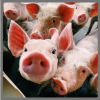
Histidine is an essential amino acid for protein synthesis, but it also plays a vital role in the metabolic system of pigs. An accurate assessment of His requirement provides pivotal information for efficient growth and health of pigs.
Read more
-

Apr
13
Interpretive Summary: Effects of a Saccharomyces cerevisiae fermentation product on fecal characteristics, metabolite concentrations, and microbiota populations of dogs subjected to exercise challenge

The objective of this study was to determine the fecal characteristics, microbiota, and metabolites of dogs fed a Saccharomyces cerevisiae fermentation product (SCFP) and subjected to exercise challenge in untrained and trained states. Thirty-six adult dogs were randomly assigned to control or SCFP-supplemented (250 mg/d) diets and fed for 10 wk.
Read more
-

Apr
13
Interpretive Summary: Glucose-induced enhanced anti-oxidant activity inhibits apoptosis in goose fatty liver

No significant pathological symptoms were observed in the liver of goose after overfeeding, suggesting that a specific protection mechanism exists in goose liver. Previous studies have shown that mitochondria may participate in the formation of goose fatty liver by improving its energy metabolism and the production of precursor metabolites.
Read more
-

Apr
13
Interpretive Summary: Evaluation of oxidized beta-carotene on sow and piglet immune systems, sow reproductive performance, and piglet growth
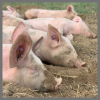
Beta-carotene is a known antioxidant found in most red and orange-pigmented vegetables and has been documented to have health benefits. However, beta-carotene has been reported to gain oxygen molecules spontaneously, thus oxidizing it.
Read more
-

Apr
06
ASAS CEO Search
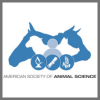
To Apply: Complete the online form at https://www.asas.org/asas-ceo-candidates
Application materials will be accepted only via the above link.
Do you know someone that would be a great candidate for the CEO position? If so, submit their information on the online form at https://www.asas.org/asas-ceo-nominations. Screening of applicants will begin on May 26, 2023.
Read more
-

Apr
06
Interpretive Summary: Total fishmeal replacement by defatted Tenebrio molitor larvae meal induces alterations in intermediary metabolism of European sea bass (Dicentrarchus labrax)
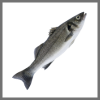
Insect meal has been increasingly considered as novel protein source in diets for different animal models, including fish. European sea bass is one of the most important fish species in Europe, particularly in the Mediterranean.
Read more
-

Apr
06
Interpretive Summary: Antimicrobial and antibiofilm activity of isoorientin against carbapenem non-sensitive Escherichia coli from raw milk of goats
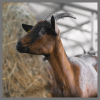
Escherichia coli (E. coli) has been the major foodborne bacteria that can cause diarrhea, gastroenteritis, and some complications, and also used as fecal bacteria pollution indicator in food. Carbapenems are considered as the last resort to life-threatening E. coli infections.
Read more
-

Apr
06
Interpretive Summary: Dietary yeast beta 1,3/1,6 glucan supplemented to adult Labrador Retrievers alters peripheral blood immune cell responses to vaccination challenge without affecting protective immunity

Companion animal food trends reflect the growing demand for healthy, functional foods. Yeast-derived β-glucans have been shown to train the human immune system to respond and resolve inflammation quickly, which aligns with companion animal health goals of providing disease protection without excessive inflammation.
Read more
-

Apr
06
Interpretive Summary: Wet-food diet promotes the recovery from surgery of castration and control of body weight in adult young cats

Castration is a surgical operation common in pet cats and dogs, and weight gain is often observed a period after castration. Nutritional management can be important for animal health in both processes.
Read more
-

Apr
06
Interpretive Summary: Variations in the 24 h temporal patterns and time budgets of grazing, rumination, and idling behaviors in grazing dairy cows in a New Zealand system

This study explored how grazing dairy cows pattern their essential such as including grazing, rumination, and idling, and how they distribute their time for those behaviors over 24 h. We used a group of spring-calved grazing dairy cows affiliated with different breeds, milking ages, and genetic merits and recorded their grazing and rumination behaviors for the whole milking period.
Read more
-

Apr
06
Interpretive Summary: Analysis of runs of homozygosity of cattle living in different climate zones

Domestication and evolution of cattle originated different modern breeds in different places worldwide. The interaction between natural and artificial selection and the adaptation to environment shaped the genome, and the three different types of cattle here considered (taurus, indicus, and composite) may harbor different selection signatures.
Read more
-

Mar
29
DAIRY PRIDE Act of 2023 is introduced
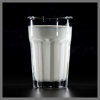
As a response to the United States Food and Drug Administration’s (FDA’s) proposed guidance regarding labeling of non-dairy products, Senators Susan Collins (R-ME) and Angus King (I-ME) introduced The Defending Against Imitations and Replacements of Yogurt, milk, and cheese to Promote Regular Intake of Dairy Everyday Act (DAIRY PRIDE Act) of 2023. The DAIRY PRIDE Act would require non-dairy products made from nuts, seeds, plants, and algae to no longer be mislabeled with terms such as milk, yogurt, or cheese.
Read more
-

Mar
29
FDA releases guidance for plant-based milk-alternative beverage labeling
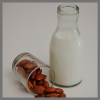
The United States Food and Drug Administration (FDA) has released a set of guidelines for plant-based milk-alternative beverage labeling. The guidance also includes recommendations on the use of voluntary nutrient statements. According to the FDA, the use of these voluntary nutrient statements would provide consumers with additional nutrition information to help them understand certain nutritional differences between these products and milk and make informed dietary choices.
Read more
-

Mar
29
FSIS extends time-limited trials until November

The United States Department of Agriculture’s (USDA’s) Food and Safety Inspection Service (FSIS) has extended the trial period for a study on the impact that line speeds have on workers at swine processing facilities, until November 30, 2023.
Read more
-

Mar
29
Industry groups all to modernize the Federal Milk Marketing Order system

The Board of Directors of the National Milk Producers Federation (NMPF) has endorsed a proposal that will modernize the Federal Milk Marketing Order (FMMO) system. Overseen by the United States Department of Agriculture (USDA), FMMOs establish provisions under which dairy processors buy fresh milk from dairy farmers who supply a marketing area, maintaining stable marketing relationships for all handlers and producers and organizing the complex process of marketing fresh milk.
Read more
-

Mar
29
New “Product of USA” rule put forth by Biden Administration

The United States Department of Agriculture (USDA) has proposed new requirements for the voluntary “Product of USA” claim. The proposed rule allows the voluntary “Product of USA” or “Made in the USA” label claim to be used on meat, poultry, and egg products only when they are derived from animals born, raised, slaughtered, and processed in the United States.
Read more
-

Mar
29
The Beagle Brigade Act of 2023 is introduced

Earlier this month, United States Senators Reverend Raphael Warnock (D-GA) and Joni Ernst (R-IA) introduced the Beagle Brigade Act of 2023. The bipartisan bill would provide permanent authorization for the National Detector Dog Training Center, located in Newnan, Georgia.
Read more
-

Mar
29
The Military Family Nutrition Access Act is introduced

United States Senators Tammy Duckworth (D-IL), and Lisa Murkowski (R-AK) have introduced The Military Family Nutrition Access Act, to support active-duty military families experiencing food insecurity. The bipartisan bill would address food insecurity by excluding Basic Allowance for Housing (BAH), from income calculations used to determine Supplemental Nutrition Assistance Program (SNAP) eligibility.
Read more
-

Mar
29
US requests talks with Mexico over GMO corn
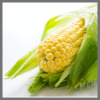
The Office of the United States Trade Representative (USTR) has announced that it is requesting technical consultations with the Government of Mexico under the Sanitary and Phytosanitary Measures (SPS) Chapter of the United States–Mexico–Canada Agreement (USMCA). The request comes as the United States and Mexico are at battle regarding genetically modified corn.
Read more
-

Mar
29
USDA announces over 43 million dollars for meat and poultry research
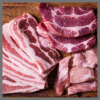
The United States Department of Agriculture (USDA) has announced over $43 million for meat and poultry processing research, innovation, and expansion. This funding comes as part of the American Rescue Plan and the USDA’s Agriculture and Food Research Initiative (AFRI).
Read more
 AprInterpretive Summary: The effects of standardized ileal digestible His to Lys ratio on growth performance, intestinal health, and mobilization of histidine-containing proteins in pigs at 7 to 11 kg body weight
AprInterpretive Summary: The effects of standardized ileal digestible His to Lys ratio on growth performance, intestinal health, and mobilization of histidine-containing proteins in pigs at 7 to 11 kg body weight Histidine is an essential amino acid for protein synthesis, but it also plays a vital role in the metabolic system of pigs. An accurate assessment of His requirement provides pivotal information for efficient growth and health of pigs.
Histidine is an essential amino acid for protein synthesis, but it also plays a vital role in the metabolic system of pigs. An accurate assessment of His requirement provides pivotal information for efficient growth and health of pigs. AprInterpretive Summary: Effects of a Saccharomyces cerevisiae fermentation product on fecal characteristics, metabolite concentrations, and microbiota populations of dogs subjected to exercise challenge
AprInterpretive Summary: Effects of a Saccharomyces cerevisiae fermentation product on fecal characteristics, metabolite concentrations, and microbiota populations of dogs subjected to exercise challenge The objective of this study was to determine the fecal characteristics, microbiota, and metabolites of dogs fed a Saccharomyces cerevisiae fermentation product (SCFP) and subjected to exercise challenge in untrained and trained states. Thirty-six adult dogs were randomly assigned to control or SCFP-supplemented (250 mg/d) diets and fed for 10 wk.
The objective of this study was to determine the fecal characteristics, microbiota, and metabolites of dogs fed a Saccharomyces cerevisiae fermentation product (SCFP) and subjected to exercise challenge in untrained and trained states. Thirty-six adult dogs were randomly assigned to control or SCFP-supplemented (250 mg/d) diets and fed for 10 wk. AprInterpretive Summary: Glucose-induced enhanced anti-oxidant activity inhibits apoptosis in goose fatty liver
AprInterpretive Summary: Glucose-induced enhanced anti-oxidant activity inhibits apoptosis in goose fatty liver No significant pathological symptoms were observed in the liver of goose after overfeeding, suggesting that a specific protection mechanism exists in goose liver. Previous studies have shown that mitochondria may participate in the formation of goose fatty liver by improving its energy metabolism and the production of precursor metabolites.
No significant pathological symptoms were observed in the liver of goose after overfeeding, suggesting that a specific protection mechanism exists in goose liver. Previous studies have shown that mitochondria may participate in the formation of goose fatty liver by improving its energy metabolism and the production of precursor metabolites. AprInterpretive Summary: Evaluation of oxidized beta-carotene on sow and piglet immune systems, sow reproductive performance, and piglet growth
AprInterpretive Summary: Evaluation of oxidized beta-carotene on sow and piglet immune systems, sow reproductive performance, and piglet growth Beta-carotene is a known antioxidant found in most red and orange-pigmented vegetables and has been documented to have health benefits. However, beta-carotene has been reported to gain oxygen molecules spontaneously, thus oxidizing it.
Beta-carotene is a known antioxidant found in most red and orange-pigmented vegetables and has been documented to have health benefits. However, beta-carotene has been reported to gain oxygen molecules spontaneously, thus oxidizing it. AprASAS CEO Search
AprASAS CEO Search To Apply: Complete the online form at https://www.asas.org/asas-ceo-candidates
To Apply: Complete the online form at https://www.asas.org/asas-ceo-candidates AprInterpretive Summary: Total fishmeal replacement by defatted Tenebrio molitor larvae meal induces alterations in intermediary metabolism of European sea bass (Dicentrarchus labrax)
AprInterpretive Summary: Total fishmeal replacement by defatted Tenebrio molitor larvae meal induces alterations in intermediary metabolism of European sea bass (Dicentrarchus labrax) Insect meal has been increasingly considered as novel protein source in diets for different animal models, including fish. European sea bass is one of the most important fish species in Europe, particularly in the Mediterranean.
Insect meal has been increasingly considered as novel protein source in diets for different animal models, including fish. European sea bass is one of the most important fish species in Europe, particularly in the Mediterranean. AprInterpretive Summary: Antimicrobial and antibiofilm activity of isoorientin against carbapenem non-sensitive Escherichia coli from raw milk of goats
AprInterpretive Summary: Antimicrobial and antibiofilm activity of isoorientin against carbapenem non-sensitive Escherichia coli from raw milk of goats Escherichia coli (E. coli) has been the major foodborne bacteria that can cause diarrhea, gastroenteritis, and some complications, and also used as fecal bacteria pollution indicator in food. Carbapenems are considered as the last resort to life-threatening E. coli infections.
Escherichia coli (E. coli) has been the major foodborne bacteria that can cause diarrhea, gastroenteritis, and some complications, and also used as fecal bacteria pollution indicator in food. Carbapenems are considered as the last resort to life-threatening E. coli infections. AprInterpretive Summary: Dietary yeast beta 1,3/1,6 glucan supplemented to adult Labrador Retrievers alters peripheral blood immune cell responses to vaccination challenge without affecting protective immunity
AprInterpretive Summary: Dietary yeast beta 1,3/1,6 glucan supplemented to adult Labrador Retrievers alters peripheral blood immune cell responses to vaccination challenge without affecting protective immunity Companion animal food trends reflect the growing demand for healthy, functional foods. Yeast-derived β-glucans have been shown to train the human immune system to respond and resolve inflammation quickly, which aligns with companion animal health goals of providing disease protection without excessive inflammation.
Companion animal food trends reflect the growing demand for healthy, functional foods. Yeast-derived β-glucans have been shown to train the human immune system to respond and resolve inflammation quickly, which aligns with companion animal health goals of providing disease protection without excessive inflammation. AprInterpretive Summary: Wet-food diet promotes the recovery from surgery of castration and control of body weight in adult young cats
AprInterpretive Summary: Wet-food diet promotes the recovery from surgery of castration and control of body weight in adult young cats Castration is a surgical operation common in pet cats and dogs, and weight gain is often observed a period after castration. Nutritional management can be important for animal health in both processes.
Castration is a surgical operation common in pet cats and dogs, and weight gain is often observed a period after castration. Nutritional management can be important for animal health in both processes. AprInterpretive Summary: Variations in the 24 h temporal patterns and time budgets of grazing, rumination, and idling behaviors in grazing dairy cows in a New Zealand system
AprInterpretive Summary: Variations in the 24 h temporal patterns and time budgets of grazing, rumination, and idling behaviors in grazing dairy cows in a New Zealand system This study explored how grazing dairy cows pattern their essential such as including grazing, rumination, and idling, and how they distribute their time for those behaviors over 24 h. We used a group of spring-calved grazing dairy cows affiliated with different breeds, milking ages, and genetic merits and recorded their grazing and rumination behaviors for the whole milking period.
This study explored how grazing dairy cows pattern their essential such as including grazing, rumination, and idling, and how they distribute their time for those behaviors over 24 h. We used a group of spring-calved grazing dairy cows affiliated with different breeds, milking ages, and genetic merits and recorded their grazing and rumination behaviors for the whole milking period. AprInterpretive Summary: Analysis of runs of homozygosity of cattle living in different climate zones
AprInterpretive Summary: Analysis of runs of homozygosity of cattle living in different climate zones Domestication and evolution of cattle originated different modern breeds in different places worldwide. The interaction between natural and artificial selection and the adaptation to environment shaped the genome, and the three different types of cattle here considered (taurus, indicus, and composite) may harbor different selection signatures.
Domestication and evolution of cattle originated different modern breeds in different places worldwide. The interaction between natural and artificial selection and the adaptation to environment shaped the genome, and the three different types of cattle here considered (taurus, indicus, and composite) may harbor different selection signatures. MarDAIRY PRIDE Act of 2023 is introduced
MarDAIRY PRIDE Act of 2023 is introduced As a response to the United States Food and Drug Administration’s (FDA’s) proposed guidance regarding labeling of non-dairy products, Senators Susan Collins (R-ME) and Angus King (I-ME) introduced The Defending Against Imitations and Replacements of Yogurt, milk, and cheese to Promote Regular Intake of Dairy Everyday Act (DAIRY PRIDE Act) of 2023. The DAIRY PRIDE Act would require non-dairy products made from nuts, seeds, plants, and algae to no longer be mislabeled with terms such as milk, yogurt, or cheese.
As a response to the United States Food and Drug Administration’s (FDA’s) proposed guidance regarding labeling of non-dairy products, Senators Susan Collins (R-ME) and Angus King (I-ME) introduced The Defending Against Imitations and Replacements of Yogurt, milk, and cheese to Promote Regular Intake of Dairy Everyday Act (DAIRY PRIDE Act) of 2023. The DAIRY PRIDE Act would require non-dairy products made from nuts, seeds, plants, and algae to no longer be mislabeled with terms such as milk, yogurt, or cheese. MarFDA releases guidance for plant-based milk-alternative beverage labeling
MarFDA releases guidance for plant-based milk-alternative beverage labeling The United States Food and Drug Administration (FDA) has released a set of guidelines for plant-based milk-alternative beverage labeling. The guidance also includes recommendations on the use of voluntary nutrient statements. According to the FDA, the use of these voluntary nutrient statements would provide consumers with additional nutrition information to help them understand certain nutritional differences between these products and milk and make informed dietary choices.
The United States Food and Drug Administration (FDA) has released a set of guidelines for plant-based milk-alternative beverage labeling. The guidance also includes recommendations on the use of voluntary nutrient statements. According to the FDA, the use of these voluntary nutrient statements would provide consumers with additional nutrition information to help them understand certain nutritional differences between these products and milk and make informed dietary choices. MarFSIS extends time-limited trials until November
MarFSIS extends time-limited trials until November The United States Department of Agriculture’s (USDA’s) Food and Safety Inspection Service (FSIS) has extended the trial period for a study on the impact that line speeds have on workers at swine processing facilities, until November 30, 2023.
The United States Department of Agriculture’s (USDA’s) Food and Safety Inspection Service (FSIS) has extended the trial period for a study on the impact that line speeds have on workers at swine processing facilities, until November 30, 2023. MarIndustry groups all to modernize the Federal Milk Marketing Order system
MarIndustry groups all to modernize the Federal Milk Marketing Order system The Board of Directors of the National Milk Producers Federation (NMPF) has endorsed a proposal that will modernize the Federal Milk Marketing Order (FMMO) system. Overseen by the United States Department of Agriculture (USDA), FMMOs establish provisions under which dairy processors buy fresh milk from dairy farmers who supply a marketing area, maintaining stable marketing relationships for all handlers and producers and organizing the complex process of marketing fresh milk.
The Board of Directors of the National Milk Producers Federation (NMPF) has endorsed a proposal that will modernize the Federal Milk Marketing Order (FMMO) system. Overseen by the United States Department of Agriculture (USDA), FMMOs establish provisions under which dairy processors buy fresh milk from dairy farmers who supply a marketing area, maintaining stable marketing relationships for all handlers and producers and organizing the complex process of marketing fresh milk. MarNew “Product of USA” rule put forth by Biden Administration
MarNew “Product of USA” rule put forth by Biden Administration The United States Department of Agriculture (USDA) has proposed new requirements for the voluntary “Product of USA” claim. The proposed rule allows the voluntary “Product of USA” or “Made in the USA” label claim to be used on meat, poultry, and egg products only when they are derived from animals born, raised, slaughtered, and processed in the United States.
The United States Department of Agriculture (USDA) has proposed new requirements for the voluntary “Product of USA” claim. The proposed rule allows the voluntary “Product of USA” or “Made in the USA” label claim to be used on meat, poultry, and egg products only when they are derived from animals born, raised, slaughtered, and processed in the United States. MarThe Beagle Brigade Act of 2023 is introduced
MarThe Beagle Brigade Act of 2023 is introduced Earlier this month, United States Senators Reverend Raphael Warnock (D-GA) and Joni Ernst (R-IA) introduced the Beagle Brigade Act of 2023. The bipartisan bill would provide permanent authorization for the National Detector Dog Training Center, located in Newnan, Georgia.
Earlier this month, United States Senators Reverend Raphael Warnock (D-GA) and Joni Ernst (R-IA) introduced the Beagle Brigade Act of 2023. The bipartisan bill would provide permanent authorization for the National Detector Dog Training Center, located in Newnan, Georgia. MarThe Military Family Nutrition Access Act is introduced
MarThe Military Family Nutrition Access Act is introduced United States Senators Tammy Duckworth (D-IL), and Lisa Murkowski (R-AK) have introduced The Military Family Nutrition Access Act, to support active-duty military families experiencing food insecurity. The bipartisan bill would address food insecurity by excluding Basic Allowance for Housing (BAH), from income calculations used to determine Supplemental Nutrition Assistance Program (SNAP) eligibility.
United States Senators Tammy Duckworth (D-IL), and Lisa Murkowski (R-AK) have introduced The Military Family Nutrition Access Act, to support active-duty military families experiencing food insecurity. The bipartisan bill would address food insecurity by excluding Basic Allowance for Housing (BAH), from income calculations used to determine Supplemental Nutrition Assistance Program (SNAP) eligibility. MarUS requests talks with Mexico over GMO corn
MarUS requests talks with Mexico over GMO corn The Office of the United States Trade Representative (USTR) has announced that it is requesting technical consultations with the Government of Mexico under the Sanitary and Phytosanitary Measures (SPS) Chapter of the United States–Mexico–Canada Agreement (USMCA). The request comes as the United States and Mexico are at battle regarding genetically modified corn.
The Office of the United States Trade Representative (USTR) has announced that it is requesting technical consultations with the Government of Mexico under the Sanitary and Phytosanitary Measures (SPS) Chapter of the United States–Mexico–Canada Agreement (USMCA). The request comes as the United States and Mexico are at battle regarding genetically modified corn. MarUSDA announces over 43 million dollars for meat and poultry research
MarUSDA announces over 43 million dollars for meat and poultry research The United States Department of Agriculture (USDA) has announced over $43 million for meat and poultry processing research, innovation, and expansion. This funding comes as part of the American Rescue Plan and the USDA’s Agriculture and Food Research Initiative (AFRI).
The United States Department of Agriculture (USDA) has announced over $43 million for meat and poultry processing research, innovation, and expansion. This funding comes as part of the American Rescue Plan and the USDA’s Agriculture and Food Research Initiative (AFRI).



